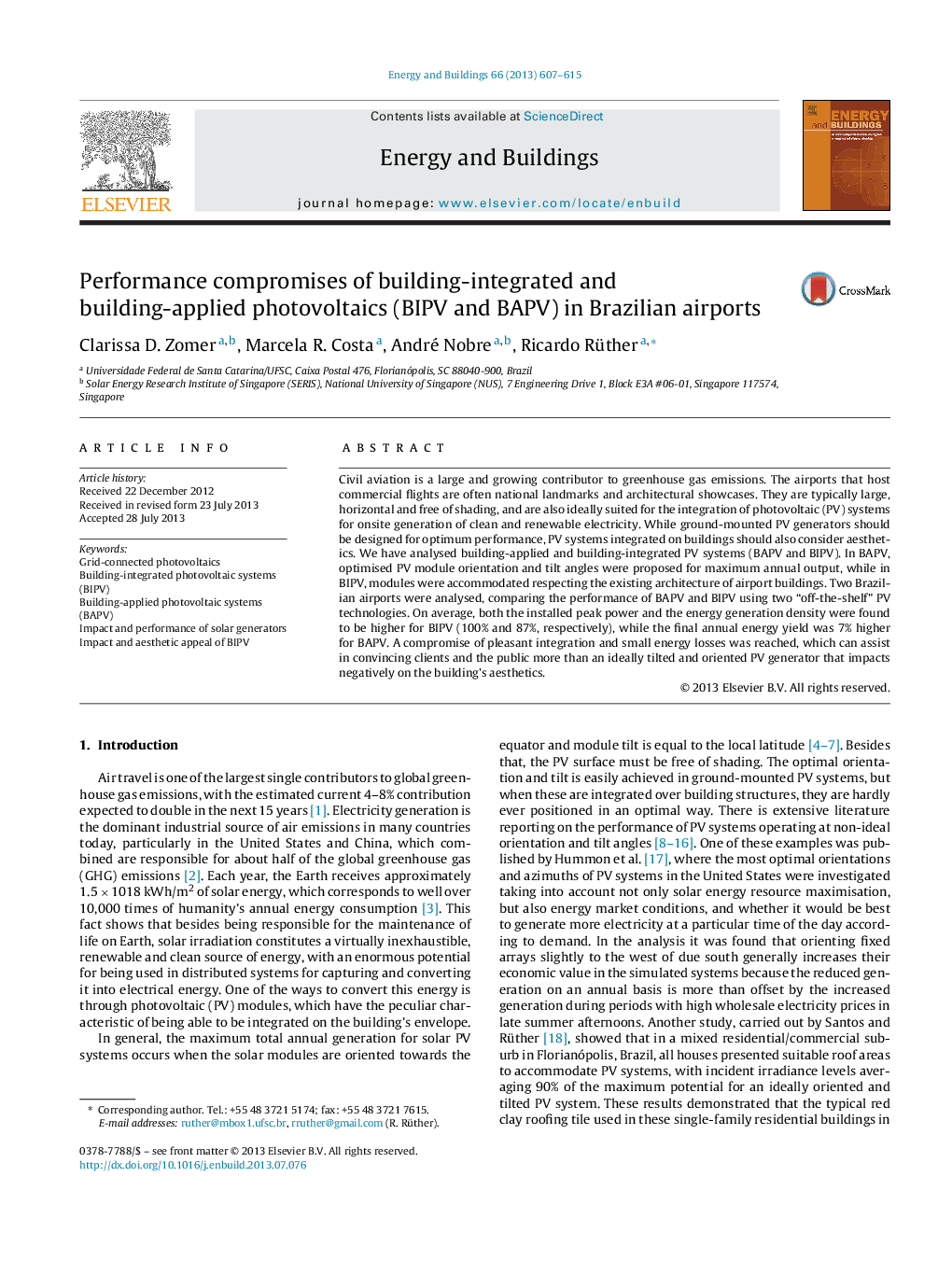| Article ID | Journal | Published Year | Pages | File Type |
|---|---|---|---|---|
| 6734775 | Energy and Buildings | 2013 | 9 Pages |
Abstract
Civil aviation is a large and growing contributor to greenhouse gas emissions. The airports that host commercial flights are often national landmarks and architectural showcases. They are typically large, horizontal and free of shading, and are also ideally suited for the integration of photovoltaic (PV) systems for onsite generation of clean and renewable electricity. While ground-mounted PV generators should be designed for optimum performance, PV systems integrated on buildings should also consider aesthetics. We have analysed building-applied and building-integrated PV systems (BAPV and BIPV). In BAPV, optimised PV module orientation and tilt angles were proposed for maximum annual output, while in BIPV, modules were accommodated respecting the existing architecture of airport buildings. Two Brazilian airports were analysed, comparing the performance of BAPV and BIPV using two “off-the-shelf” PV technologies. On average, both the installed peak power and the energy generation density were found to be higher for BIPV (100% and 87%, respectively), while the final annual energy yield was 7% higher for BAPV. A compromise of pleasant integration and small energy losses was reached, which can assist in convincing clients and the public more than an ideally tilted and oriented PV generator that impacts negatively on the building's aesthetics.
Keywords
Related Topics
Physical Sciences and Engineering
Energy
Renewable Energy, Sustainability and the Environment
Authors
Clarissa D. Zomer, Marcela R. Costa, André Nobre, Ricardo Rüther,
